×
SparkFun will be closed on Tuesday, December 24th, and Wednesday, December 25th, in observance of the Christmas holiday. Any orders qualifying for same day shipping placed after 2:00 p.m. (MST) on Monday, December 23rd, will be processed on Thursday, December 26th, when we return to regular business hours. Wishing you a safe and happy holiday from all of us at SparkFun!
Please note - we will not be available for Local Pick up orders from December 24th-December 27th. If you place an order for Local Pick-Up we will have those ready on Monday, December 30th.
MinM - Miniature BlinkM
MinM is a tiny smart LED that is designed for wearable, handheld and lighting devices. Like BlinkM, its larger sibling, MinM runs the same unique firmware that creates virtually any RGB color, fades smoothly between two colors, and blinks in virtually any pattern. It can glow like a firefly or flicker like an antique indicator bulb. It's a smart LED that lets you do all of that without having to know any electronics engineering or programming languages. BlinkM Sequencer -our free Open Source sequencing software runs on most operating systems -makes it easy to select any RGB color or pattern and instantly upload it to BlinkM MinM.
- 6,000 mcd (millicandelas) of light intensity
- Full-color RGB LED w/ 24-bit color control
- Can plug directly into Arduino or LinkM, no wiring or other components needed!
- Specify colors using 24-bit RGB or HSB
- Fade between colors with variable timing and fade speeds
- Randomized color selection, with ranges and based on previous color
- 18 built-in light scripts (sequences)
- Create and save light scripts of up to 49 commands long
- Stand-alone operation: No microcontroller needed for light script playback
- Up to 127 BlinkM channels on a single two-wire network
- Low power consumption
MinM - Miniature BlinkM Product Help and Resources
Core Skill: Soldering
This skill defines how difficult the soldering is on a particular product. It might be a couple simple solder joints, or require special reflow tools.
Skill Level: Noob - Some basic soldering is required, but it is limited to a just a few pins, basic through-hole soldering, and couple (if any) polarized components. A basic soldering iron is all you should need.
See all skill levels
Core Skill: Programming
If a board needs code or communicates somehow, you're going to need to know how to program or interface with it. The programming skill is all about communication and code.
Skill Level: Rookie - You will need a better fundamental understand of what code is, and how it works. You will be using beginner-level software and development tools like Arduino. You will be dealing directly with code, but numerous examples and libraries are available. Sensors or shields will communicate with serial or TTL.
See all skill levels
Core Skill: Electrical Prototyping
If it requires power, you need to know how much, what all the pins do, and how to hook it up. You may need to reference datasheets, schematics, and know the ins and outs of electronics.
Skill Level: Noob - You don't need to reference a datasheet, but you will need to know basic power requirements.
See all skill levels
Comments
Looking for answers to technical questions?
We welcome your comments and suggestions below. However, if you are looking for solutions to technical questions please see our Technical Assistance page.
Customer Reviews
No reviews yet.

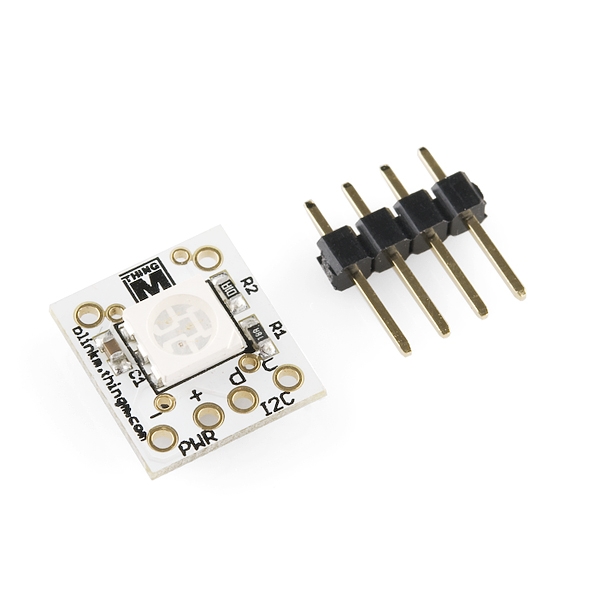
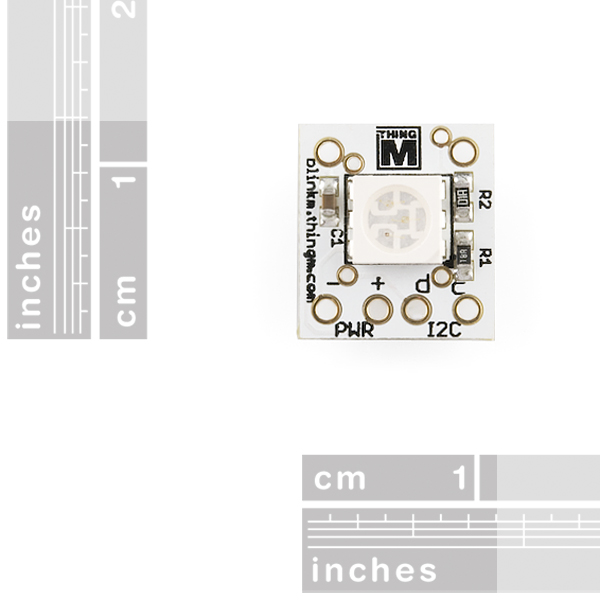
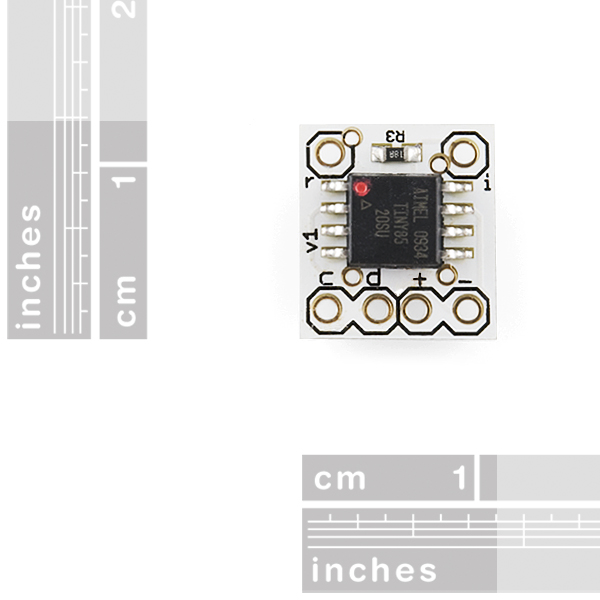
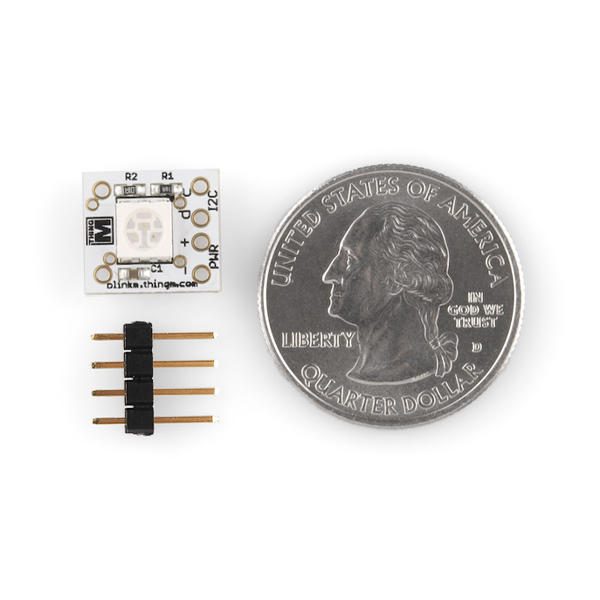
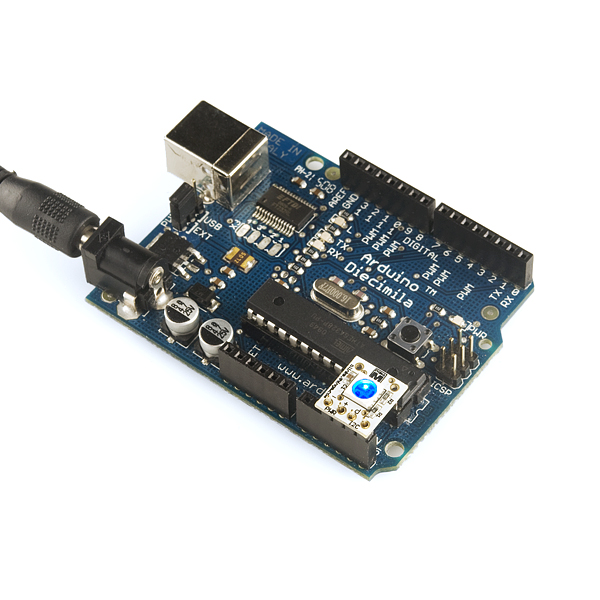
Can someone recommend a way to put this together with a battery and a toggle switch in the smallest possible package? Ideally, it would be use something smaller than CR3032 (the battery is nearly 3x the size of the board).
Is the part number for the RGB led available, I would like to pull a data sheet on that part
This part: COM-10866 seems to be the same pinout, except the Red and Green LED positions are interchanged.
Unfortunately, we do not currently have that information.
http://www.youtube.com/watch?v=tFaFUcEfImo
Is it just me or are the PTHs not quite on 0.1" centers? I suppose that could be by design, so that there's some friction to keep the header in place while soldering. If so, that's a super clever idea!
Yep, they are offset spaced a bit so they kinda hold the header for soldering. We do that in a lot of our production builds as well. I think we have a tutorial about it somewhere.
Yeah, we totally stole the offset-header friction-fit idea from Sparkfun. Thank you, Sparkfun. ;-)
anyone have a video of these in use?
Does this items retain it programmed sequence after power is removed or can I program it and leave it then the sequence runs whenever it is powered up again?
It retains it. Check out the quickstart guide.
mine came in today, these are great!
Okay, I understand now!
i have no experience with SMD, so I have no clue how meticulous this thing is to assemble. Now, to get this or BlinkM for my car Interior....
Zach, the component and manufacturing cost of a standard BlinkM and a BlinkM MinM are about the same, so the retail price is about the same. More specifically: the small surface mount LED on the MinM is a more expensive part than the corresponding LED on a standard BlinkM, and that price difference counteracts the savings in making a smaller device.
- Mike (one of the founders of ThingM)
Still, $13 for only $2-3 in components?
Although you are paying royalties on at least two patents.
For those that want to DIY it - http://github.com/Entropy512/I2C_RGB - about the only remaining thing needed for that project is some work on making the USI TWI implementation more reliable. (I haven't had time for that in the past few months as I have been focusing more on working with the PCA9635.)
I'm going to second this. Why can't we have something like this in an I2C type? http://www.sparkfun.com/commerce/product_info.php?products_id=10075 It's even 2,000 mcd brighter and less than half the price here.
I do understand it's a dedicated IC/cheaper but surely a microprocessor and 3 transistors can do a good job if not better. only really lacking feature would be current control, but PWM would suffice if it halves the price..
The real fun of these is getting lots and making cascading effects/sequences, but hitting the $100's less than 10 units into that is a killjoy.
Why is this smaller than the middle range model and still the same price.